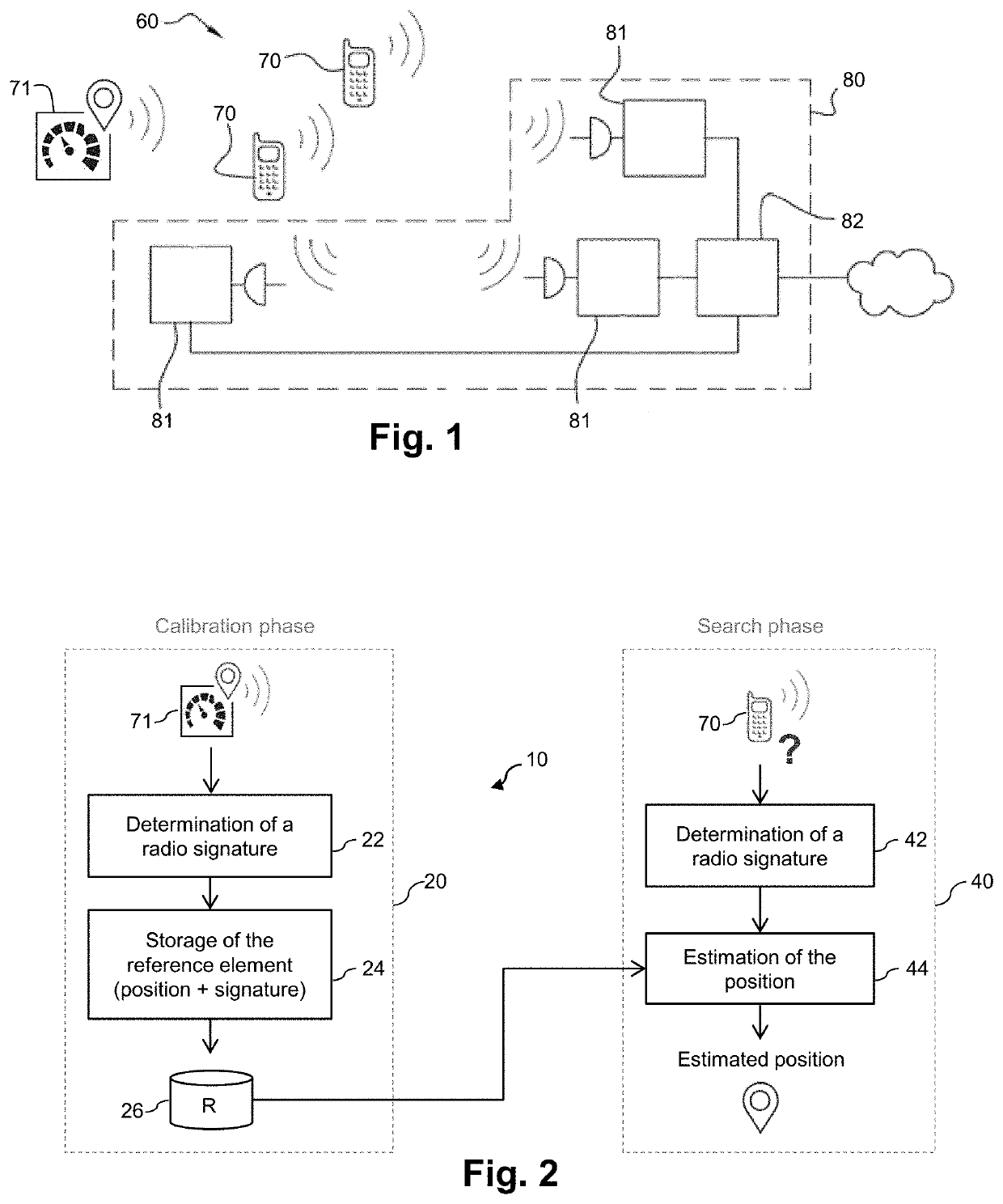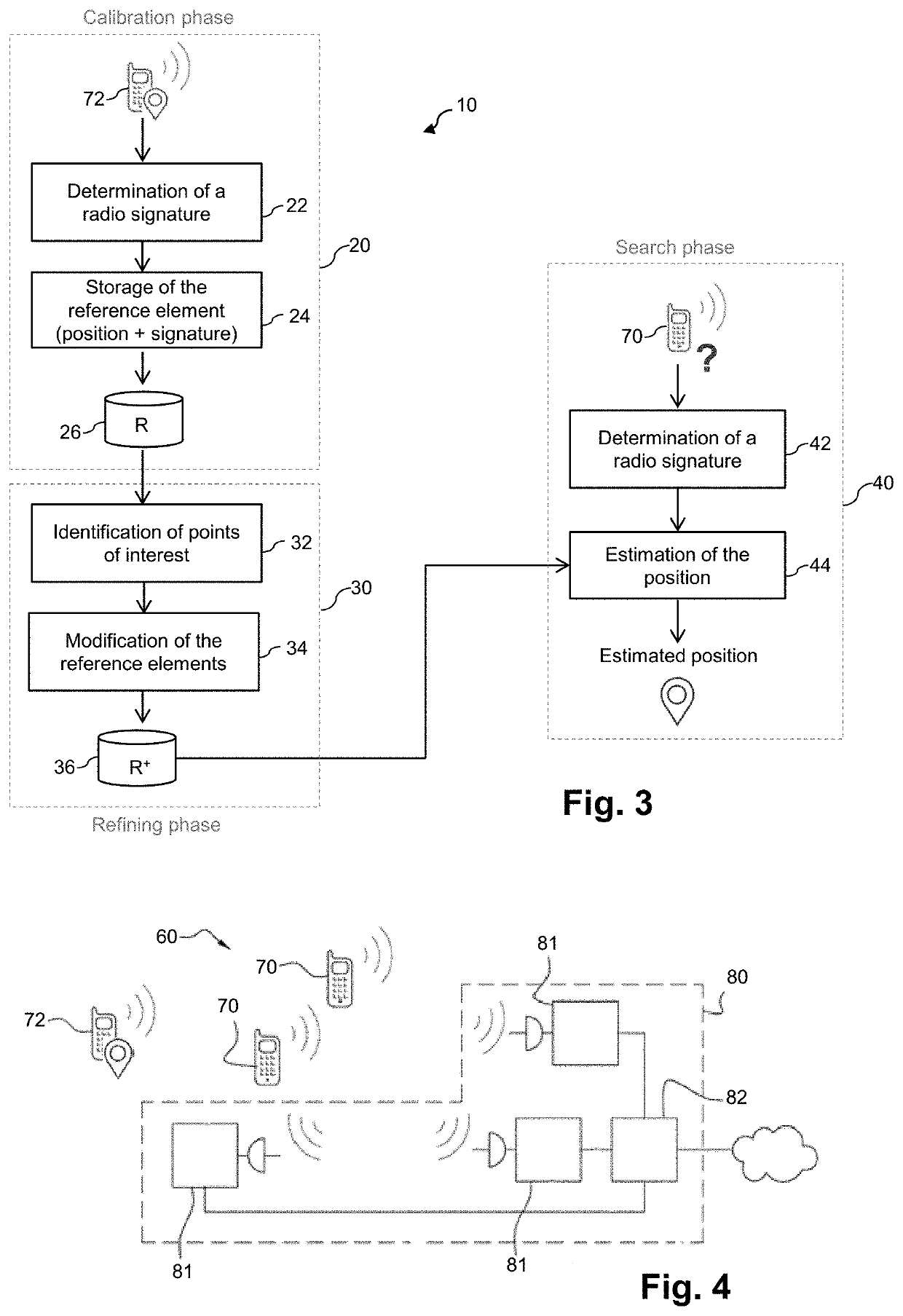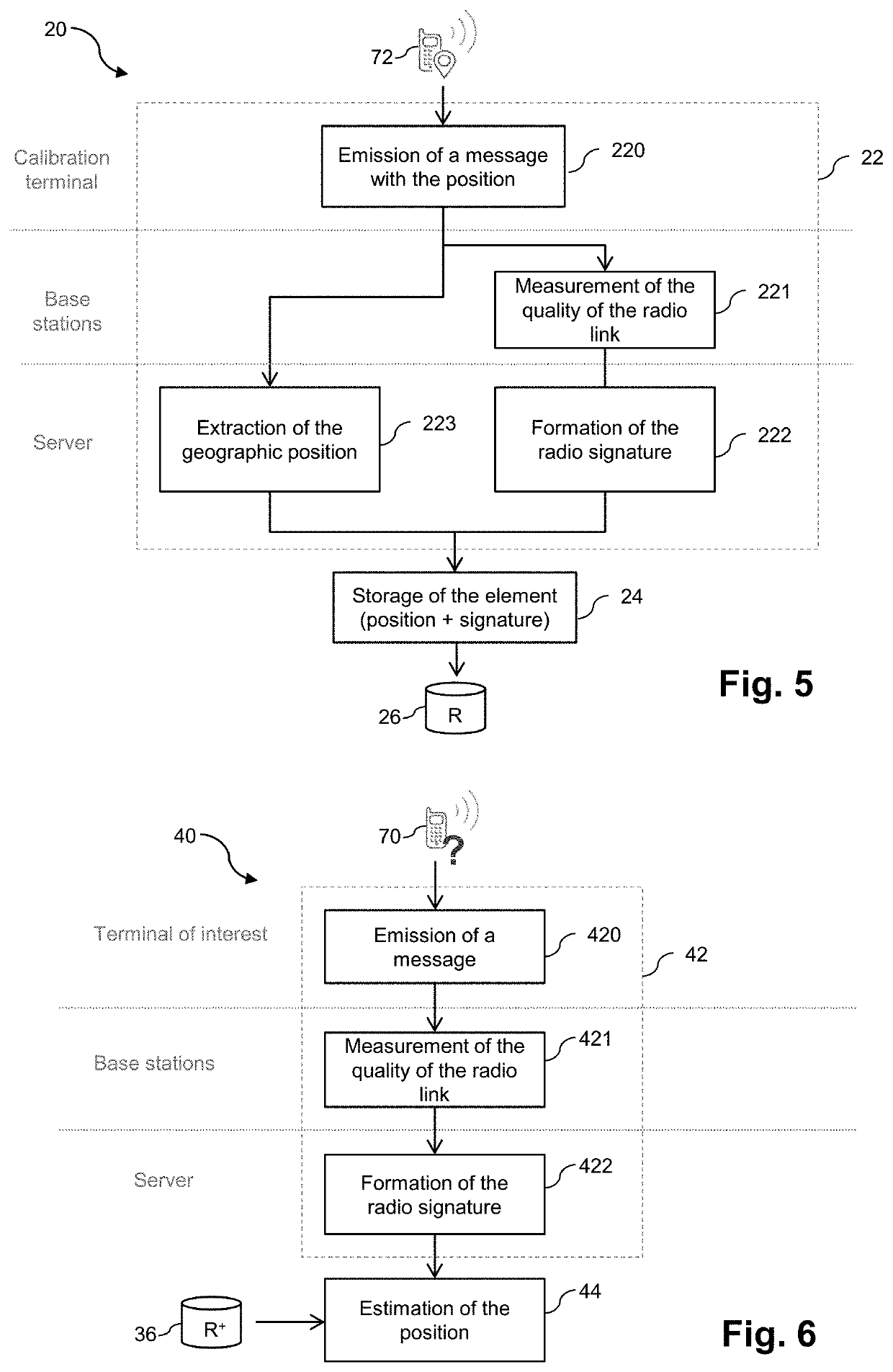Method and system for geolocating a terminal occupying particular geographical positions
- Summary
- Abstract
- Description
- Claims
- Application Information
AI Technical Summary
Benefits of technology
Problems solved by technology
Method used
Image
Examples
Embodiment Construction
[0085]As indicated above, the present invention aims to estimate the geographic position of a terminal, called “terminal of interest”, of a wireless communication system using a learning method based on information representative of the quality of radio links existing between said terminal and base stations of said wireless communication system.
[0086]FIG. 1 schematically shows a wireless communication system 60, including a plurality of terminals 70 and an access network 80 including a plurality of connected base stations 81 and a server 82 connected to said base stations 81. In such a system 60, the communications can generally be bidirectional, that is to say that data can be transmitted from the access network 80 to a terminal 70 over a downstream radio link, or from a terminal 70 to the access network 80 over an upstream radio link. Thus, a measurement of the quality of the radio link existing between a terminal 70 and a base station 81 of the access network 80 can for example b...
PUM
 Login to View More
Login to View More Abstract
Description
Claims
Application Information
 Login to View More
Login to View More - R&D
- Intellectual Property
- Life Sciences
- Materials
- Tech Scout
- Unparalleled Data Quality
- Higher Quality Content
- 60% Fewer Hallucinations
Browse by: Latest US Patents, China's latest patents, Technical Efficacy Thesaurus, Application Domain, Technology Topic, Popular Technical Reports.
© 2025 PatSnap. All rights reserved.Legal|Privacy policy|Modern Slavery Act Transparency Statement|Sitemap|About US| Contact US: help@patsnap.com



